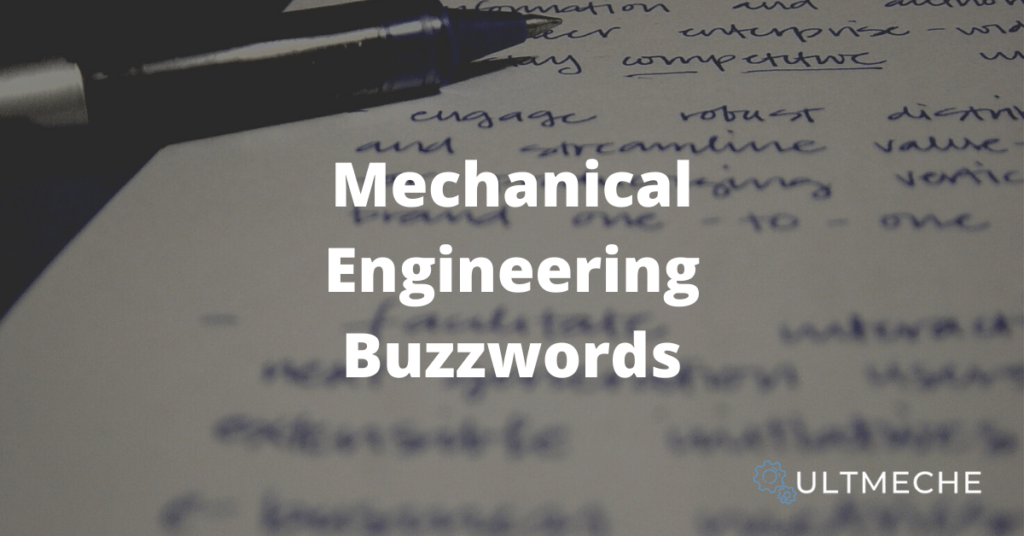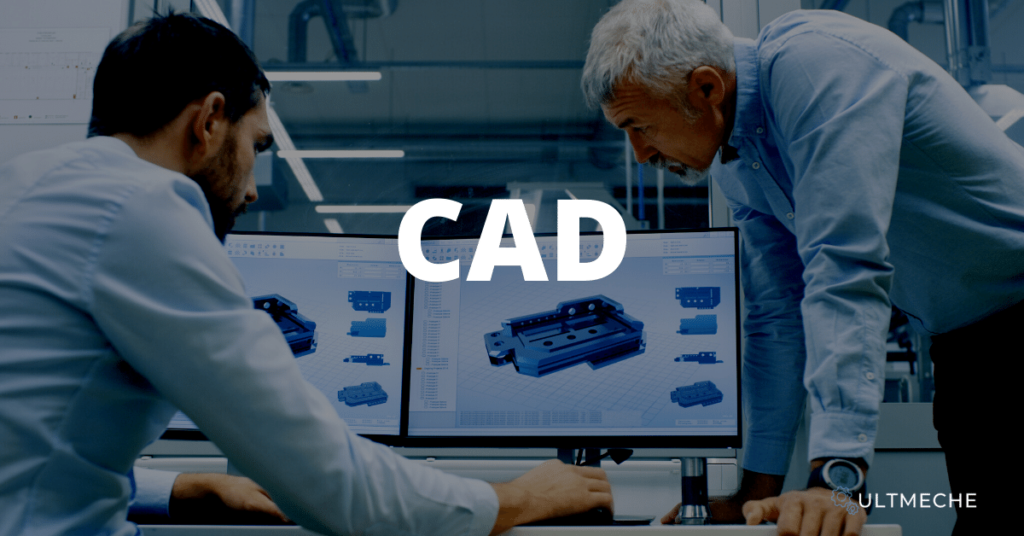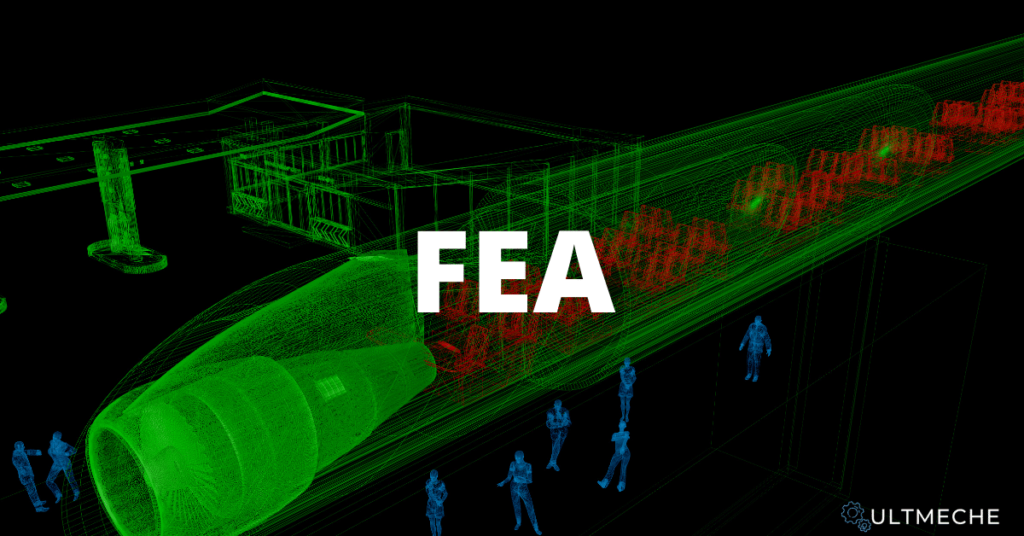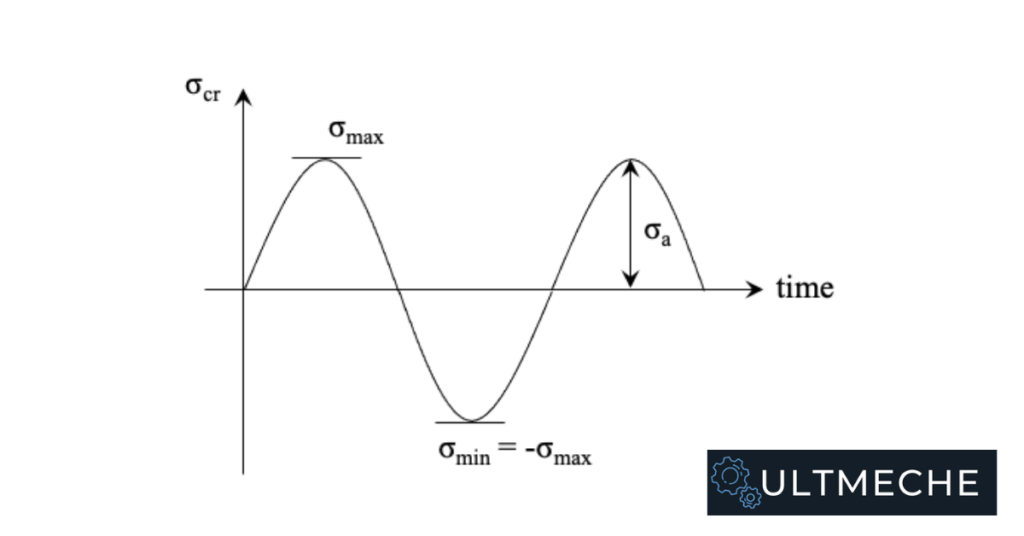
Mechanical Engineering buzzwords are the keywords you MUST have on your resume. No exceptions to this rule. If you don’t have any mechanical engineering buzzwords, then you’re NGMI. (Not gonna get the job)
Job application tracking software (ATS), love seeing these keywords. The keywords are what will get you through the electronic stack of files and into the recruiter’s hands. The recruiter then takes about 10-15 seconds of a look on your resume, so you better make those count.
February 29, 2024The Mechanical Engineering Buzzwords You Need
CAD

No brainer that you’re going to have to specify CAD at one point. Whether it is regarding creating CAD drawings or interpreting them. CAD drawings are the vane of engineering products. They define engineering requirements for vendors to make these products.
SolidWorks
SolidWorks is the first CAD software you will use. Courses that teach SolidWorks are provided in nearly all engineering colleges. This is a must have keyword to put on your resume so that you can get your first entry level engineering job or internship.
Catia
CATIA is a widely used CAD software, especially in the aerospace and defense industry. If your college offers this software, then you should take it. CATIA is not part of the standard engineering curriculum, and is provided as an elective.
ProEngineer or Creo Parametric
ProEngineer, now commonly referred to as PTC Creo, is a very powerful parametric CAD modeling software. This is a must have key word on your engineering, especially if you want to be considered for design engineering positions.
NX
Siemens NX is a CAD software that is integrated in PLM software (Product Lifecycle Management). NX is a software that is suitable for high production volume applications such as Automotive or Aerospace. In these types of applications, you’re dealing with BOMs of over thousands of line items.
NX is a highly valuable keyword that demonstrates competence in industries such as Automotive or Aerospace.
FEA

Putting the keyword “FEA” on your resume shows that you’re competent in setting boundary conditions and applying loads. As a mechanical engineer, the ability to correctly set boundary conditions and applying load cases is arguably one of the most difficult things to do.
The tricky thing with FEA is that you can incorrectly set up your analysis, but then get results that don’t mean anything.
“Garbage in, Garbage Out”
– Engineering & Computer Science
You will get FEA experience in school in your Introduction to CAD class. You will also get assigned an FEA project, so if you’re an engineering student applying for internships, put it on your resume.
SolidWorks Simulator
SolidWorks has a built in FEA application that is available for use. With SolidWorks Simulator, you can easily create models such as Beams or Pulleys, apply proper boundary conditions, and analyze results. If you don’t have project experience, this is a good one you can do on your own.
ANSYS Workbench
ANSYS is a powerful tool used for FEA. Some of its capabilities include Structural Dynamic and Natural Frequency Analysis. We want to perform Structural Dynamic and Natural Frequency Analysis on systems so that we can verify that they run under operating conditions.
The concept of Fatigue is an interesting one in Mechanical Engineering. (A concept you need to know in engineering)
Let’s say we’re looking at a pump rotating. The shaft in the pump is going to be rotating at variable speeds and as a result, will be subject to torsional stresses. The shaft will also be subject to bending stresses or axial stresses depending on the orientation. (Whether the shaft is vertical or horizontal). These stresses are cyclical.

Even though these stresses may be a lot lower than the maximum allowable, if the shaft is subject to multiple cycles, the shaft could break. Hence why we perform Structural Dynamic and Natural Frequency analysis.
Specifying ANSYS software in your resume will demonstrate your competence in Mechanical Design and Fatigue.
Femap
Femap is an FEA tool under Siemens. It is a very powerful tool and used for analysis in complex load cases in various applications such as Aerospace and Defense. Very niche, but if you’re a Structural Engineer using Femap, you better have it on your resume.
We put a huge emphasis on software because these are the TOOLS that we use in our day to day jobs. These software are all very established, and they are not going to exit the game. We will continue using software such as ANSYS or Creo, but more updated versions as the years go on.
Corporate Engineering Terms

These are going to be the terms that engineering companies LOVE. Why? Because these terms show that you are capable of making the company MONEY. The entire reason for an engineering company to exist, is to be profitable. Show companies the following mechanical engineering buzzwords so they know what you have to bring to the table.
Lean 5S
A lot of engineering companies these days are trying to incorporate Lean principles. The bottom line is that there’s too much waste and inefficiency in business operations. To save money and become even more profitable, companies need to reduce waste.
Lean 5S refers to the following
- Sort
- Set In Order
- Shine
- Standardize
- Sustain
It’s hard to argue that if a company doesn’t do the above principles, they’re going to be bleeding cash.
Implement any one of the above principles in your work and put that onto your resume. Recruiters will love you.
Learn more about engineering standards: Engineering Standards (Lean 5S)
VAVE
Value add value engineering (VAVE) consists of engineering projects that provide value. They could be the implementation of certain standards or even a new product line for an engineering company.
As an engineer, if you’re working on a product that’s never been done before at your company, you have huge opportunity to provide value. You have the option to explore new suppliers, new manufacturing methods, and new engineering.
If the outcome of the new engineering overall shows to be profitable or cost saving, then that means $$$. Higher bonus or better performance review for you, along with adding those important quantitative results onto your resume.
FMEA
Failure Modes and Effects Analysis (FMEA) is a technical study used to mitigate risk in an engineering system. FMEA is a skill that shows how calculative you are. Notice – I’m a fan of showing how you demonstrate competencies, not just specifying you have them.
Specifying that you can do FMEA vs. being detail oriented is night and day.
Always put hard skills such as FMEA for studies that you do. This will take you much farther ahead in your job search vs. “being detail oriented”.
DFM
Design for Manufacture or Manufacturability is basically what it means. Can the product that you design be manufacturable and produceable? You need to make sure, as an engineer, that your products are using the most efficient means of producing and manufacturing. Otherwise, you are leaving a lot of money if you don’t implement this principle.
You will occasionally see DFM is a keyword on a resume, so make sure it is on yours.
Design Engineering
Design Engineering is arguably one of the most common paths people take when they want to become a mechanical engineer. The following are keywords suitable for your resume as a design engineer.
Bill of Materials (BOM)
You are going to be responsible for reviewing and filling out BOMs. At sometimes, BOMs consist of more than 3000 line items that you individually as an engineer are responsible for filling out. Much better way to specify that you’re detail oriented, right?
General Arrangement Drawings
As a design engineer, you will be producing General Arrangement Drawings for customers to review and buy off.
Design Reviews
Engineering jobs will require you to present technical meetings in front of leadership. Presentations are all part of the game, so you will need to specify that you’ve done design reviews in your resume.
Automation
We believe the future of mechanical engineering is going to heavily tie in with software engineering projects involving:
- Machine Learning
- Artificial Intelligence
- Robotics
Companies such as Blue Origin, Northrop Grumman, SpaceX, Tesla, Lucid, Rivian will all utilize these software engineering principles in their functions. Trying to work for them? Put the following into your resume, even as a mechanical engineer.
Artificial Intelligence

Artificial Intelligence is the ability of a computer or robot to do tasks meant for humans utilizing intelligence through code. AI is used for applications such as autopilot driving in the aerospace or automotive industry.
It is a big winner if you have the experience to get this keyword on your resume.
Machine Learning
Machine Learning is a subset of artificial intelligence in which it builds on existing data and algorithms to replicate how humans learn. It is very complicated and requires principles in data structures, algorithms, linear algebra, data science to continue to build upon itself.
Potential Mechanical Engineering applications of machine learning include using it for non-destructive examination or determining production processes.
If you work as a mechanical engineer, see if you can get into any Machine Learning type of projects at work or school. Implement machine learning when you define manufacturing processes!
Robotics
The use of robotics is highly widespread in engineering when it comes to high volume production. High volume production in automotive, aerospace, or oil & gas industries is where robotics can be utilized in a business sense. Robotics will continue to be used for manufacturing, so it will be important to have an understanding.
Include all the mechanical engineering buzzwords above and watch the number of job interview you get skyrocket.
“To become more confident, you need to become more competent”
Ultmeche
Need a mechanical engineering resume review? Check out: Mechanical Engineering Resume Review
About the author

Kazuyoshi Fujimoto, PE
Founder | Engineering Career Coach | Principal Mechanical Engineer
Kazu oversees all of ultmeche’s engineering services. He provides consulting such as resume reviews, rewrites, mock interviews, and all services career related. Additionally, Kazu performs consulting work regarding Oil & Gas, Automotive, and Aerospace & Defense. Kazu is licensed as a professional engineer in the state of California and has 9+ years of experience in Oil & Gas, Automotive, and Aerospace & Defense.

2 thoughts on “Mechanical Engineering Buzzwords”